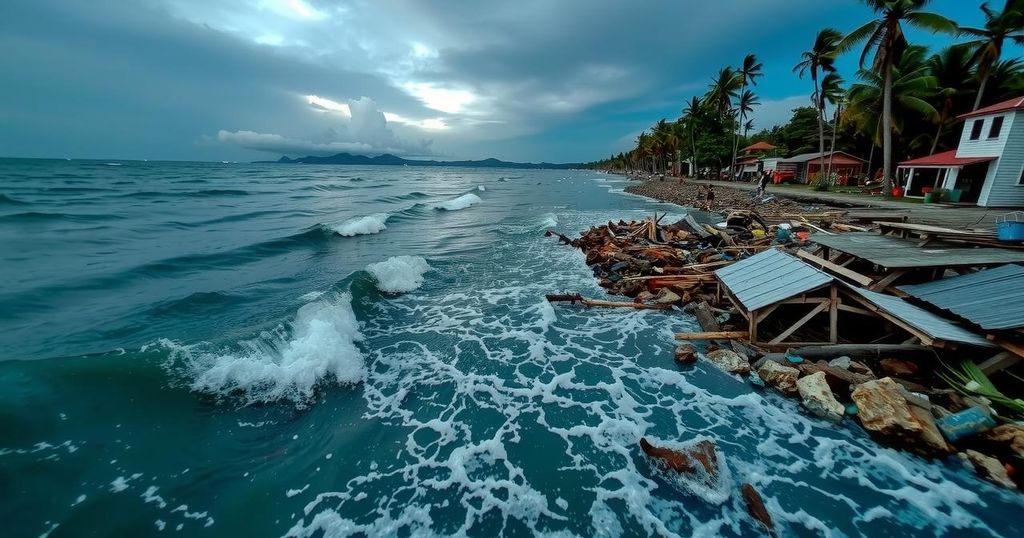Reflecting on the 20-Year Journey of Disaster Mitigation Post-Aceh Tsunami
The 20th anniversary of the Aceh tsunami serves as a critical reminder of the need for disaster preparedness. The 2004 earthquake, a megathrust event, triggered devastating consequences, leading to over 167,000 fatalities. Ongoing research and the establishment of collaborative disaster management frameworks, such as the pentahelix model, emphasize a national commitment to improving resilience and response capabilities against future seismic risks.
As December 2024 marks the 20th anniversary of the devastating Aceh tsunami, a reflection on this tragic event highlights the significant recovery journeys undertaken in Indonesia. The tsunami was triggered by a massive 9.2 magnitude earthquake near Aceh’s coast, accounting for the loss of over 167,000 lives there alone. The catastrophe profoundly impacted not only the local population but also called global attention to disaster preparedness, emphasizing the necessity of comprehensive strategies for future vulnerabilities in a region marked by seismic activity.
The tectonic activity in Indonesia stems from its location at the convergence of four major tectonic plates, making it susceptible to significant seismic events. The 2004 Aceh earthquake exemplified this risk, identified as a megathrust event, which released an overwhelming amount of energy and produced tsunami waves reaching heights of 35 meters. The country’s high frequency of seismic activity necessitates ongoing research and monitoring, and since 2004, approximately 1,000 scholarly articles have been published on earthquake phenomena in the region.
Despite advancements in understanding earthquake mechanics, predicting these catastrophic events remains unfeasible. Consequently, disaster mitigation and risk reduction become paramount. Indonesia’s Disaster Management Law of 2007 outlines a collaborative approach involving government, academia, corporations, media, and communities, known as the pentahelix model. This framework is essential for harnessing collective efforts toward enhancing public education, developing earthquake-resistant infrastructure, and ensuring efficient communication of seismic data.
Over two decades, Indonesia’s disaster preparedness initiatives have shown promise, particularly with the Indonesian Tsunami Early Warning System (InaTEWS), which aims to disseminate timely warnings effectively across the archipelago. However, ongoing challenges such as data sharing and sectoral collaboration must be addressed to enhance mitigation efforts further and foster a resilient response to future disasters.
The Aceh tsunami, which occurred on December 26, 2004, was triggered by one of the most powerful earthquakes in recorded history. This catastrophic event not only claimed hundreds of thousands of lives but also struck at a time when Aceh was recovering from an extensive armed conflict. In reflecting on the past 20 years, researchers and experts emphasize the need for well-structured disaster mitigation plans, particularly in regions prone to seismic activity, like Indonesia, which lies along the Pacific Ring of Fire. Improvements in disaster response systems and increasing collaboration among stakeholders highlight the ongoing efforts to better prepare for and respond to natural disasters.
In summary, the 20-year reflection on the Aceh tsunami underscores the importance of preparedness and effective disaster risk management in Indonesia. With continued seismic research and the implementation of collaborative frameworks, the nation aspires to mitigate the impacts of future disasters. The commitment to building resilient communities through education and infrastructure remains essential as Indonesia navigates its complex geological landscape, ultimately striving to protect lives and property in the face of natural threats.
Original Source: theconversation.com




Post Comment